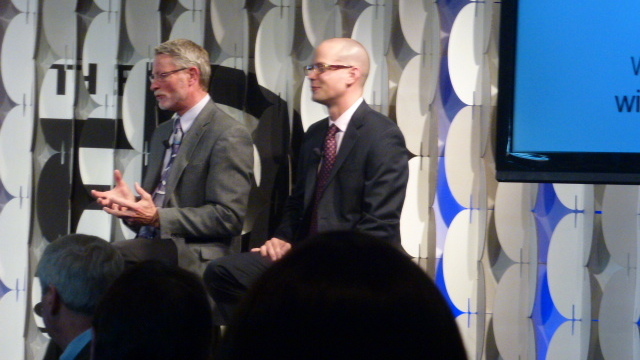
Building a “no-excuses” school requires three things: an individualized student experience, engaged parents and committed teachers.
That’s the assessment of Kristoffer Haines, vice president of national development at Rocketship Education. The Redwood City, Calif.-based K-5 schools have student scores rivaling the state’s most affluent schools — even though 90 percent of Rocketship’s students qualify for free and reduced lunch, and 75 percent are English language learners.
Building a “no-excuses” school means tailoring educational requirements for individual students, based on their skills when they arrive for their first day of class. It also means using technology to personalize the educational experience for students. “They are a connected generation, all over the place, except when they go to school.”
That’s the assessment of Rick Ogston, founder at CEO of Carpe Diem, a group of Yuma, Ariz.-based schools offering online instruction for seventh- through 12th-graders as well as a hybrid classroom-online learning model for grades 6 through 12.
Haines and Ogston spoke on the concept of “no-excuses schools” Tuesday at The ED Sessions 2.0, a speaker series sponsored by the J.A. and Kathryn Albertson Foundation.
Here are a few highlights:
Engaging parents. Rocketship expects its parents to volunteer 30 hours a year, Haines said, and engage in the education experience.
When the school’s first group of graduates left for sixth grade, their parents grew frustrated. Their children said they weren’t being pushed in middle school. Parents called the principal and district officials, and got little response.
The results? Parents formed a political action committee and found four candidates for school board. Three won. The school now has a new principal.
Personalizing education through technology. Ogston questions the assumption that a traditional classroom — which may have 35 to 40 students and a teacher — is somehow a more personalized learning environment. Technology is a way to tailor the learning experience for students who can take on an advanced curriculum, or for students who are behind grade level.
Technology will never replace a good teacher, and Ogston says he reacts somewhat flippantly when he hears suggestions to the contrary. “If you really think you can be replaced by a computer, you probably should be.”
On costs and teacher pay. Rocketship’s per-pupil costs are comparable to traditional schools, Haines said. Carpe Diem’s costs could come in lower, Ogston said, but the school would rather put cost savings into teacher salaries and benefits. “Why make it less just because you can?”
Rocketship hires about three teachers to teach 100 students in a grade level — but also hires learning lab staffers that can serve students in all grades. The goal, said Haines, is to “professionalize” teaching, and the school hopes to double its teacher pay over the next few years.
Disclosure: Idaho Education News is funded through a grant from the J.A. and Kathryn Albertson Foundation.
